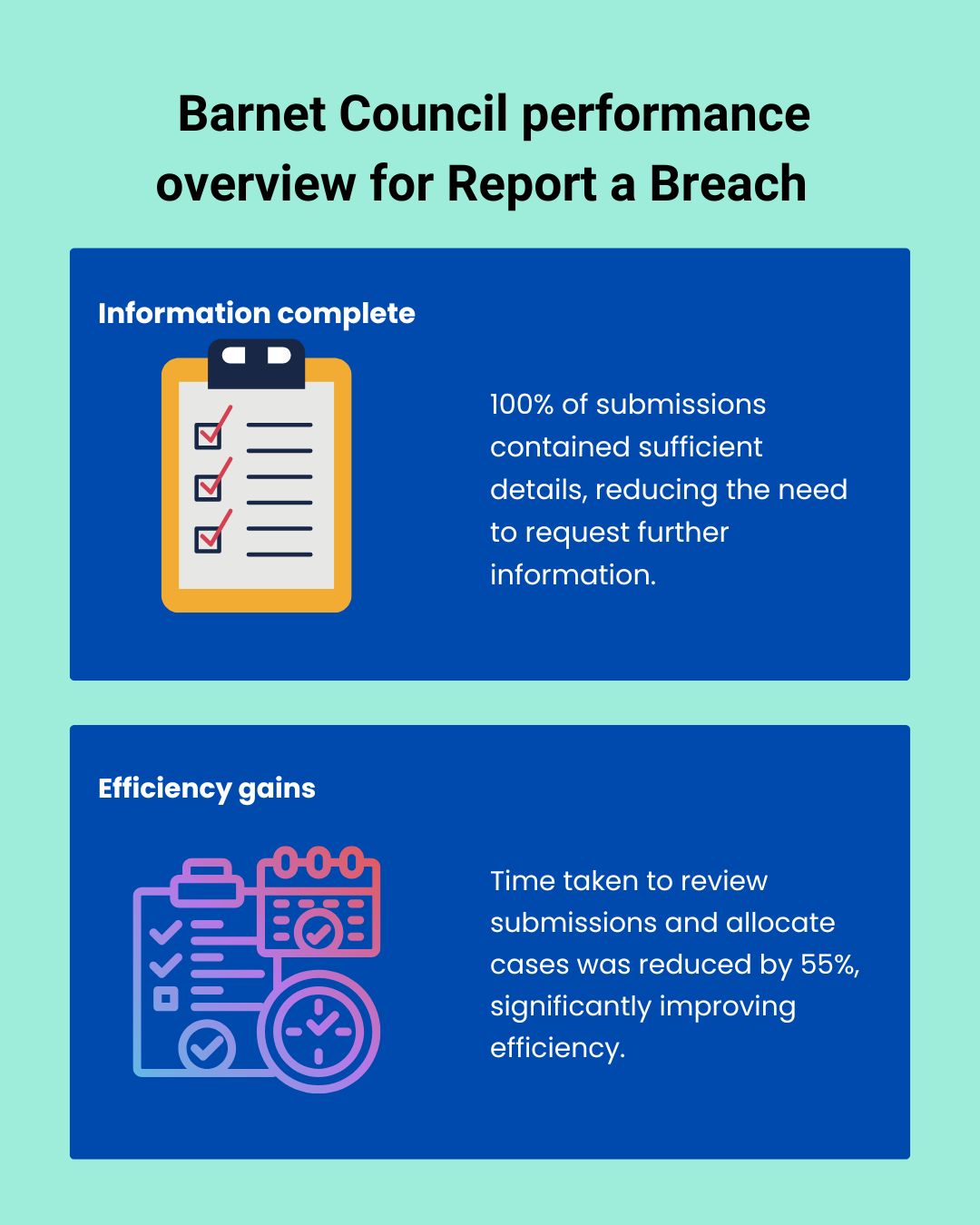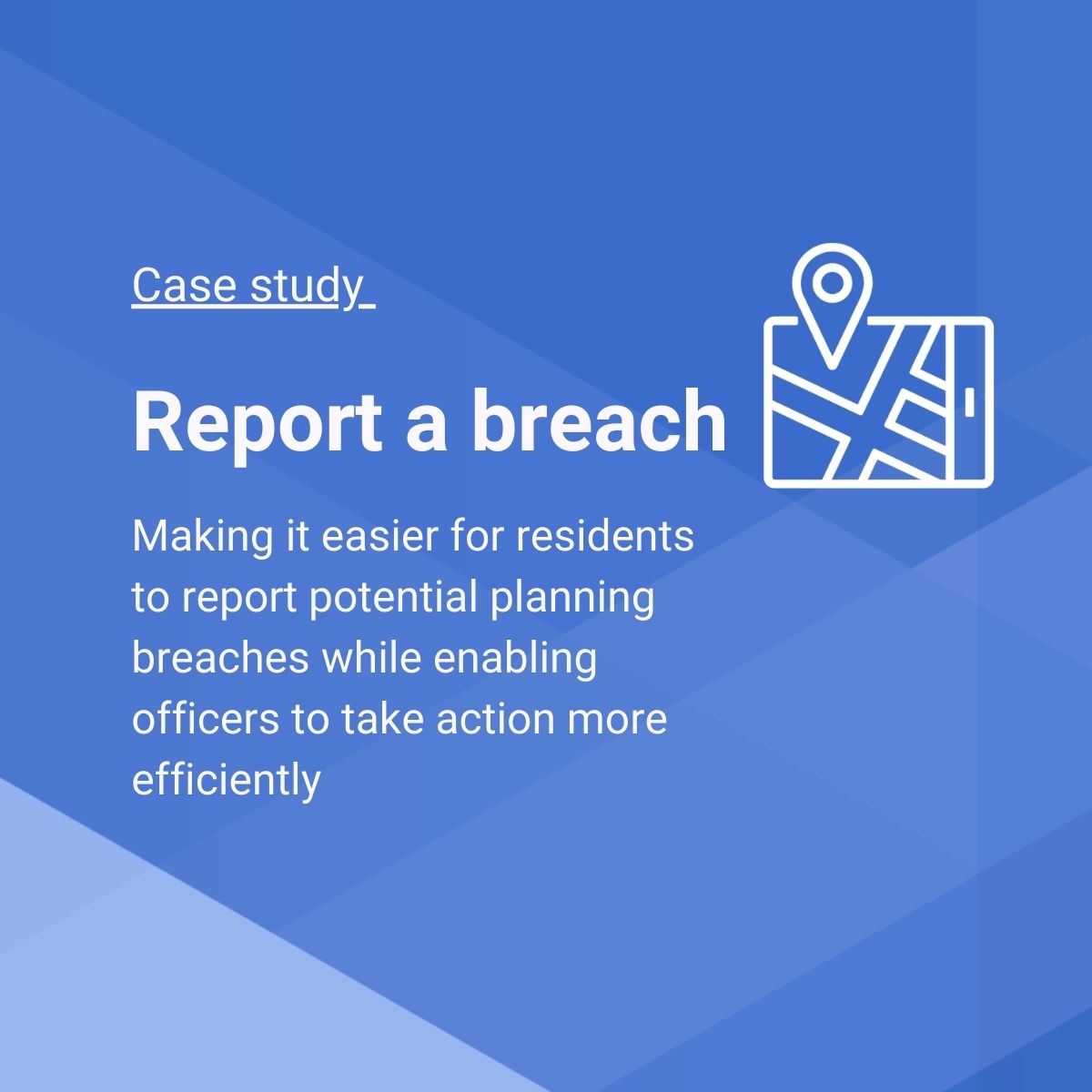The goals
The council’s goals were twofold:
- Provide residents with a simple, structured way to report breaches.
- Improve the quality of submissions, allowing officers to assess cases faster and reduce unnecessary follow-ups.
Rather than discouraging reports, the team focused on categorising submissions and guiding residents toward issues the council can act on. The service also includes helpful links to relevant planning policies and enforcement processes, ensuring users are better informed before submitting a report.
This was the first PlanX service where data was delivered directly to the Local Planning Authority (LPA) back-end via an Application Programming Interface (API), streamlining the process further.
User-centred approach
Building on lessons from the ‘Find Out If You Need Planning Permission’ service, the team prioritised a clear user journey and defined user stories to ensure the new online form would be intuitive and effective.
Key questions guided the design:
- What do we want to measure? Is the information clearer and more efficient than previous methods?
- What is the level of impact? Prioritising key areas of improvement.
- At what stage in the user journey does this occur? Website entry, form completion, case processing, or post-decision.
- How will we measure success? Using data from time tracking, call centre logs, Google Analytics, internal reporting, and feedback surveys.
- Who will own and manage the data collection? Internal teams, external partners, the council’s call centre or web team.
Monitoring and evaluation
To measure the service’s impact, Barnet Council collected pre-launch time tracking data for comparison with post-launch performance. A combination of surveys, analytics, and internal data provided insights into efficiency improvements.
Internal Survey Results:
- 86% of officers agreed that the new submission form was clearer and easier to review.
- 71% of officers felt submissions contained enough information to avoid checking other systems before a site visit.
- 57% of officers stated that ‘Report a Planning Breach’ submissions often or always contained enough information to make an initial planning assessment without needing a site visit.
- 100% of administrative staff agreed that submissions contained sufficient details, reducing the need to request further information.
- 100% of allocating managers found it simpler and quicker to review complaints before assigning cases.
Staff time recording results:
- Admin time increased by 40% initially, reflecting an adjustment period to new processes. However, time spent returned to normal after the initial learning curve.
- Time taken to review submissions and allocate cases was reduced by 55%, significantly improving efficiency.

Conclusion
Barnet’s ‘Report a Planning Breach’ service has successfully improved the way planning breaches are reported and processed. By ensuring residents can easily provide relevant details and enabling officers to review cases faster, the council has significantly streamlined its enforcement process.
The success of this project demonstrates how digital transformation can enhance public services by improving efficiency, reducing administrative burden, and delivering better outcomes for residents and council officers alike.
Want to know more?
Our community of Local Planning Authorities work together to design new digital planning products that improve the experience of the people using them.
